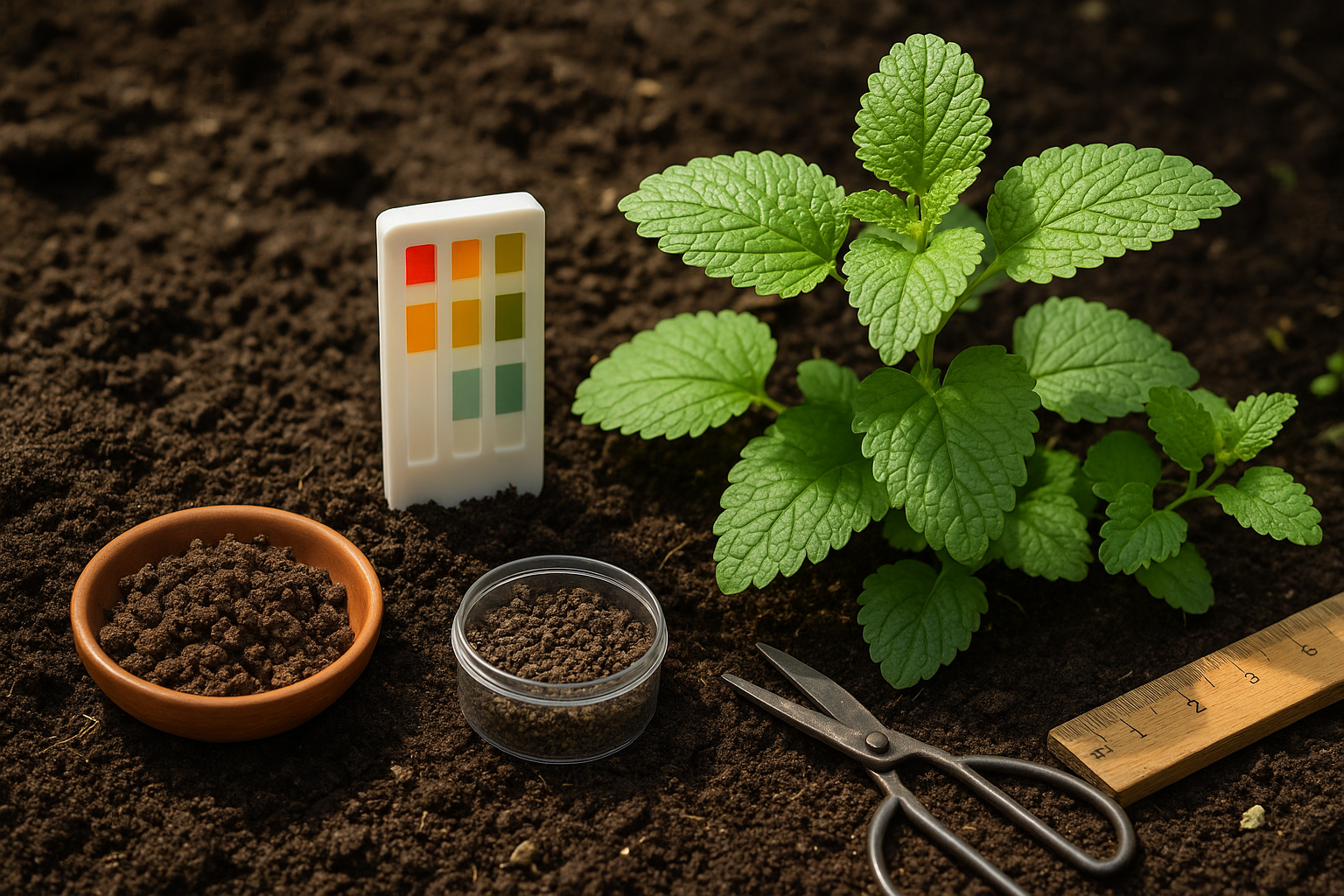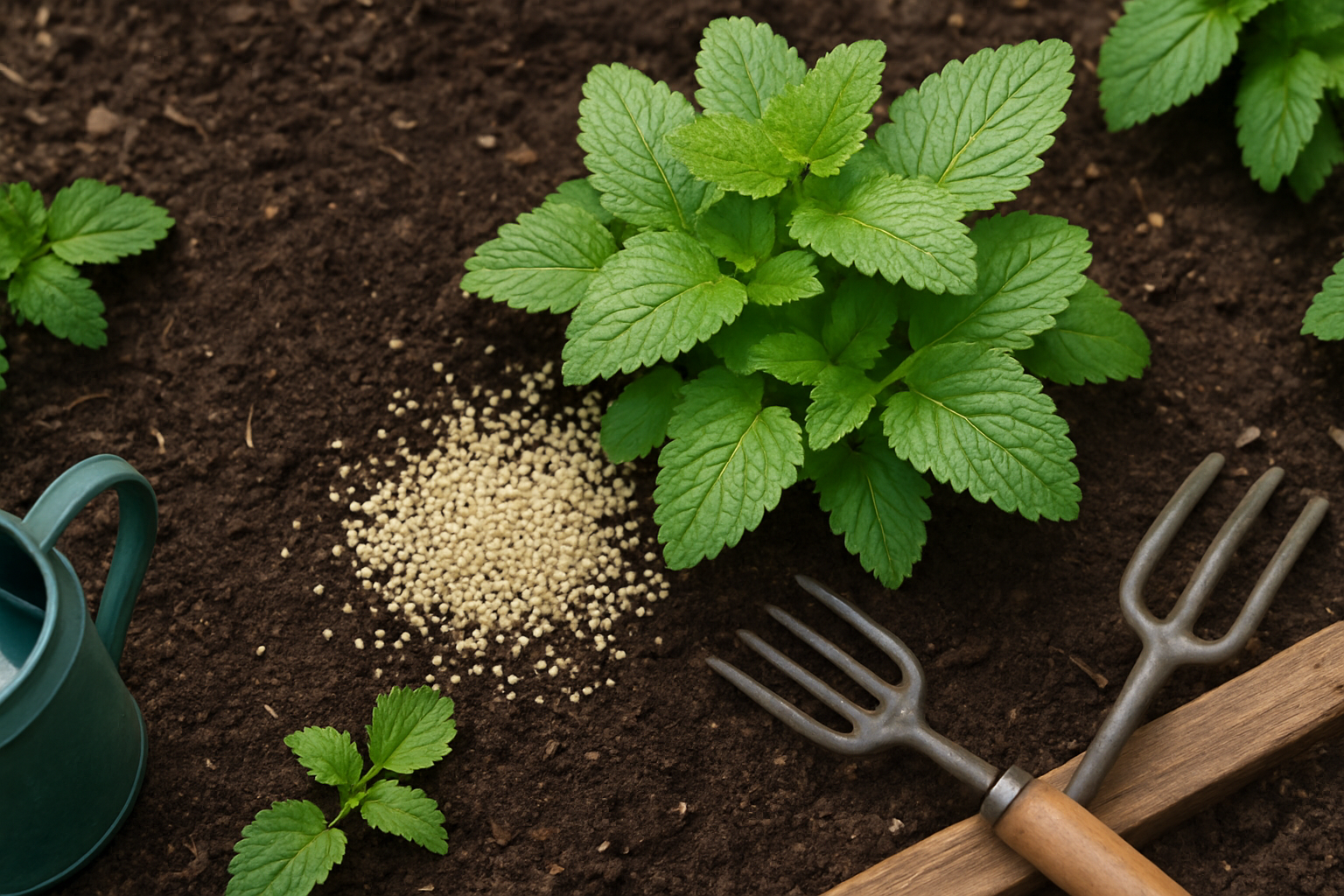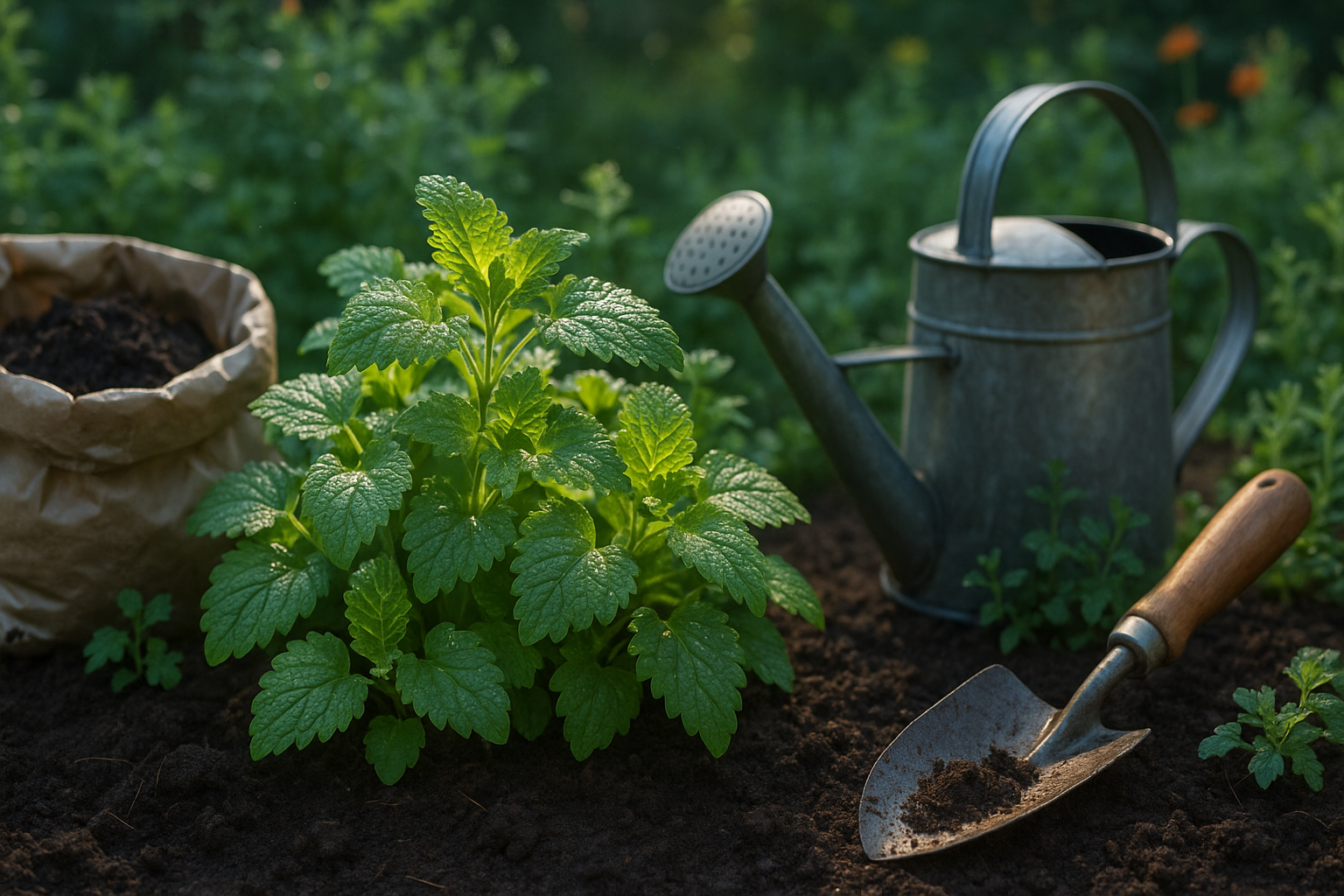Understanding Lemon Balm’s Nutritional Needs

Lemon balm, an aromatic herb from the mint family, is cherished for its citrusy scent and soothing properties. Its leaves are widely used in teas, culinary recipes, and natural remedies to promote relaxation and ease digestive discomfort.
Like many herbs, lemon balm thrives when its nutritional needs are met, making proper fertilization a key factor in growing healthy, flavorful plants. Fertilizer supports robust growth and ensures the leaves develop rich oils and a vibrant green color.
The key nutrients lemon balm requires are nitrogen, phosphorus, and potassium. Nitrogen boosts leafy growth and is essential for lush foliage; phosphorus supports root development and flowering; while potassium helps build plant resilience and overall health.
However, caution is needed—excess fertilizer can lead to leggy plants with less flavor. The existing quality of your soil plays a huge role in determining fertilizer requirements. For instance, sandy soils often need more frequent nutrient additions, while rich garden soil may only need a light boost in the spring.
Conducting a simple soil test can help you understand nutrient levels and deficiencies, ensuring you add only what’s truly needed. Amending soil with organic compost annually is a practical way to maintain balance and avoid over-fertilization.
Checking your lemon balm for signs like pale leaves or slow growth can also help you adjust your fertilizing routine for optimal results, keeping your herb garden productive and thriving.
Choosing the Right Fertilizer for Lemon Balm
Selecting the best fertilizer for lemon balm starts with understanding its needs and the difference between organic and synthetic products. Organic fertilizers, such as compost, worm castings, or fish emulsion, provide gentle nutrition, enhance soil health, and reduce the risk of burning roots. They release nutrients slowly, which suits lemon balm’s preference for steady, moderate feeding.
Synthetic fertilizers—like granular or liquid formulations—can offer an immediate nutrient boost but must be used carefully. Overuse can overwhelm the plant and damage beneficial soil microbes.
For healthy, lush lemon balm, choose balanced products with an N-P-K ratio (Nitrogen-Phosphorus-Potassium) around 4-4-4 to 5-5-5, such as Dr. Earth Organic 5 or Espoma Garden-tone. These provide enough nutrients to support leafy growth without promoting overly fragile leaves or harming flavor. Avoid high-nitrogen fertilizers (ratios exceeding 10-5-5), as they may produce leggy plants that are more prone to pests and less aromatic.
Compost is especially valuable because it improves soil structure, moisture retention, and long-term fertility. Adding natural amendments like aged manure or bone meal can also support steady, diverse nutrition. If you use a synthetic fertilizer, dilute it to half the recommended strength and apply less frequently to prevent overfeeding.
Ultimately, lemon balm thrives on organic, slow-release nutrition. Focus on enriching your soil over time instead of relying on quick fixes.
When to Fertilize
Finding the right time to fertilize is key to helping your plants thrive. For most outdoor plants, the best time to start fertilizing is in early spring, just as new growth begins. This jump-starts the growing season by giving roots and shoots much-needed nutrients.
During the mid-growing season—usually late spring or early summer—a second application helps maintain vigorous growth, especially for flowering plants and lawns. If your plants produce fruit or flowers, a lighter, more targeted feeding is often beneficial as buds form.
Always avoid fertilizing late in the season, as this can encourage new growth that’s vulnerable to frost.
Indoor plants follow a slightly different schedule: they typically benefit from light fertilizers every four to six weeks throughout their active growing period, often from late winter to early autumn, and should be given little to no fertilizer while dormant in the colder months.
Adjust based on signs from your plants—lush, green growth usually means your timing is right, but yellowing leaves or slow growth could signal nutrient needs.
Remember, each plant species may have unique feeding needs, so check care tags or do a quick search for your specific variety for the best results.
How to Apply Fertilizer to Lemon Balm

When fertilizing lemon balm, you have several methods to choose from, each with simple steps to keep your plants healthy.
For granular fertilizer, scatter a small amount (according to the package instructions) evenly around the base of the plant, about six inches away from the stems. Gently rake it into the top inch of soil and water thoroughly—never pile granules directly against the stems, as this can cause burns.
Liquid fertilizers, often diluted in water, offer a quick nutrient boost; just mix following the label and pour at the soil line, avoiding wetting the leaves to prevent fungal issues.
Side-dressing means placing a thin line of fertilizer a couple of inches from the plant’s base and gently mixing it into the soil—ideal for established outdoor lemon balm.
Top-dressing involves spreading a thin layer of compost or organic fertilizer on top of the soil every few weeks, which is especially helpful for potted plants that need regular feeding.
For potted lemon balm, use half-strength fertilizers more often and ensure pots have good drainage, as container plants are more sensitive to overfeeding.
Always water after fertilizing and avoid fertilizing during periods of extreme heat or just after transplanting to prevent stress.
Identifying and Fixing Over-Fertilization Issues
Spotting over-fertilization early can save your plants from serious damage. Look for telltale symptoms such as brown or crispy leaf tips (leaf burn), yellowing leaves, wilting despite moist soil, and unusually slow or stunted growth. Sometimes, you’ll also notice a white, crusty residue on the soil surface—this indicates excess fertilizer buildup.
If you suspect over-fertilization, the first step is to flush the soil with plenty of clean water, allowing it to drain thoroughly. This helps wash away excess salts. Remove any visibly damaged or dead leaves to aid your plant’s recovery, and hold off on feeding for several weeks.
Going forward, always follow the recommended fertilizer dosages on the product label, and apply only when your plant is actively growing. Using a diluted solution or feeding less often is usually better than overdoing it. Consider testing your soil occasionally to check nutrient levels, especially for indoor or container plants.
By keeping an eye on your plants and avoiding the temptation to “help more with more fertilizer,” you’ll encourage healthier growth and prevent costly mistakes.
Extra Lemon Balm Care Tips for a Thriving Plant
For lemon balm to truly thrive, a few extra care steps can make all the difference. Start with watering—lemon balm prefers soil that’s moist but well-drained, so water deeply when the top inch feels dry, especially during hot spells. Avoid letting the soil get soggy, as this can cause root rot.
Regular pruning is another secret to a lush, bushy plant; snip back stems frequently to promote new growth and keep the plant from becoming leggy or flowering too early.
For pest control, check under the leaves weekly for aphids or spider mites. If you spot them, try spraying with a gentle solution of water and mild soap, or introduce natural predators like ladybugs.
Healthy soil is vital, so mix in compost every spring to boost nutrients and improve soil structure. Also, watch for signs of nutrient deficiency—such as pale leaves or slow growth—and amend with an organic fertilizer if needed.
Most importantly, observe your lemon balm regularly. Changes in leaf color, growth patterns, or scent can be early clues to problems.
Finally, don’t hesitate to experiment. Factors like sunlight, humidity, and pot size can all influence growth, so be ready to tweak your care routine and find what works best in your garden.
